Python 官方文档:入门教程 => 点击学习
目录异常处理的思路测试环境准备异常处理两种方式方式一:简单异常处理器方式二:自定义异常处理器总结异常处理的思路 测试环境准备 首先写一个DemoController控制层的类作为测
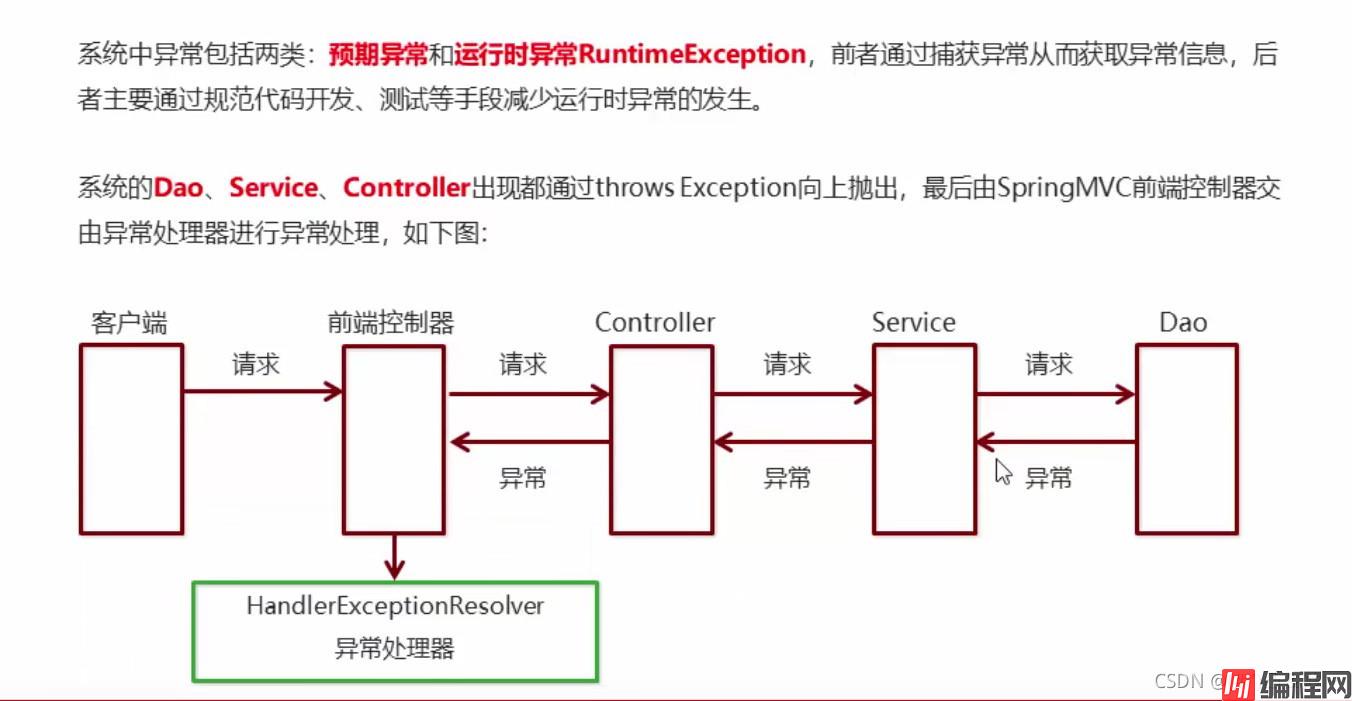
首先写一个DemoController控制层的类作为测试访问的控制器
package com.itheima.controller;
import com.itheima.exception.MyException;
import com.itheima.service.DemoService;
import org.springframework.beans.factory.annotation.Autowired;
import org.springframework.stereotype.Controller;
import org.springframework.WEB.bind.annotation.RequestMapping;
import org.springframework.web.bind.annotation.RequestParam;
import java.io.FileNotFoundException;
@Controller
public class DemoController {
@Autowired
private DemoService demoService;
@RequestMapping(value="/show")
public String show() throws FileNotFoundException, MyException {
System.out.println("show running");
demoService.show1();
// demoService.show2();
// demoService.show3();
// demoService.show4();
// demoService.show5();
return "index";
}
}
然后在service中写上接口DemoService和实现类DemoServiceImpl
package com.itheima.service;
import com.itheima.exception.MyException;
import java.io.FileNotFoundException;
public interface DemoService {
public void show1();
public void show2();
public void show3() throws FileNotFoundException;
public void show4();
public void show5() throws MyException;
}
package com.itheima.service.impl;
import com.itheima.exception.MyException;
import com.itheima.service.DemoService;
import java.io.FileInputStream;
import java.io.FileNotFoundException;
import java.io.InputStream;
public class DemoServiceImpl implements DemoService {
public void show1() {
System.out.println("类型转换异常");
Object str = "zhangsan";
Integer num = (Integer) str;
}
public void show2() {
System.out.println("抛出除零异常");
int i = 1 / 0;
}
public void show3() throws FileNotFoundException {
System.out.println("文件找不到异常");
InputStream in = new FileInputStream("C:/xxx/xxx/xxx.txt");
}
public void show4() {
System.out.println("空指针异常");
String str = null;
str.length();
}
public void show5() throws MyException {
System.out.println("自定义异常");
throw new MyException();
}
}
其中的MyException是自定义异常,被声明在itheima的另一个包下,此时还未任何实现:
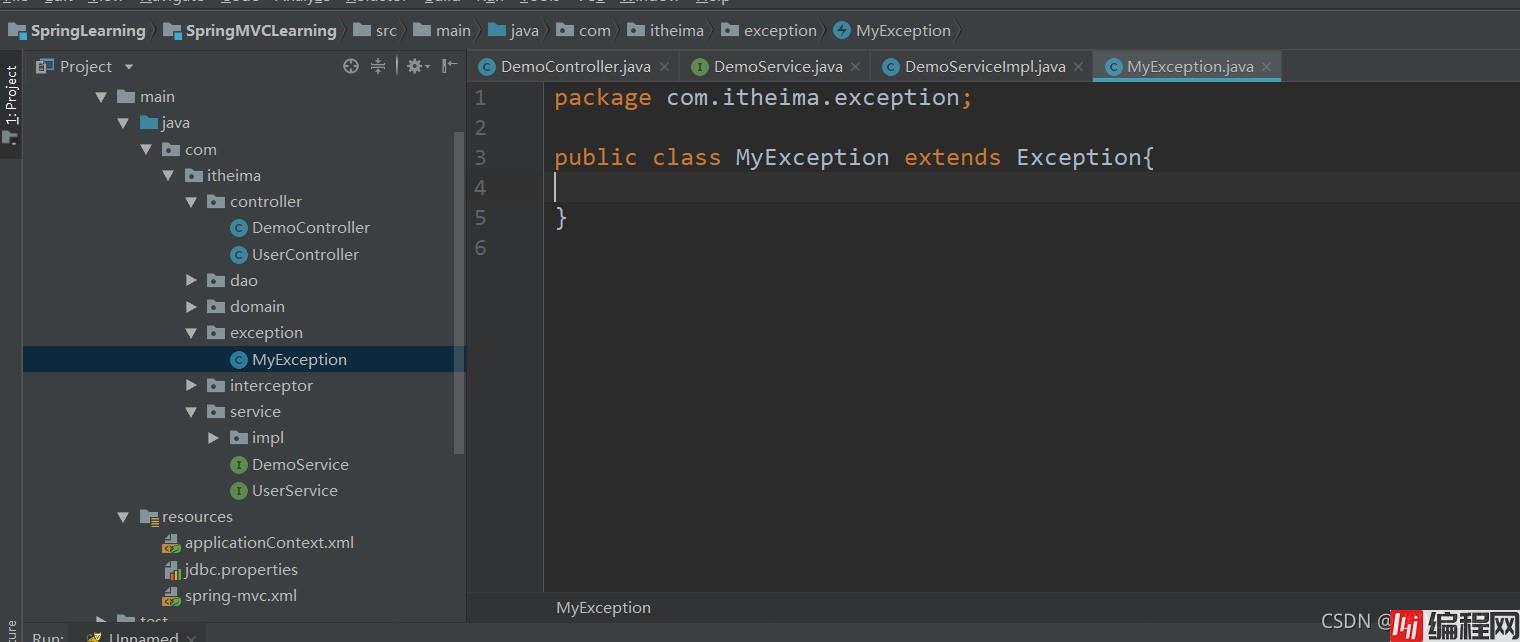
访问一下/show,因为先调用的show1方法,所以会报类型转换异常:
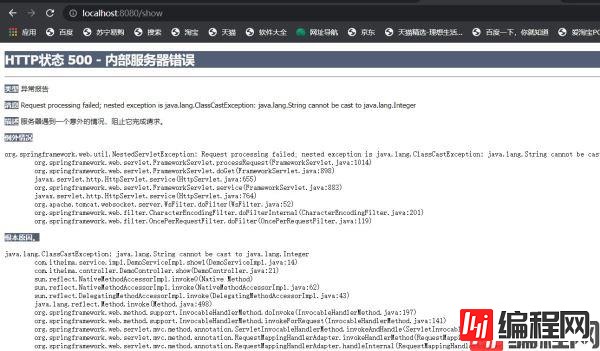
环境准备完毕。

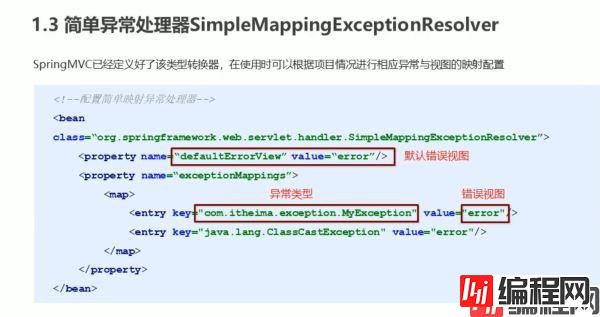
方式一很简单,去做对应的配置文件配置就可以了:
<!--配置异常处理器-->
<bean class="org.springframework.web.servlet.handler.SimpleMappingExceptionResolver">
<!--如果下面全都对不上,就会采用这个默认的defaultErrorView所对应的value值的视图-->
<property name="defaultErrorView" value="error"></property>
<property name="exceptionMappings">
<map>
<!--类型转换异常,抛了什么异常,就会跳转到value值对应的字符串显示的页面-->
<entry key="java.lang.ClassCastException" value="error"></entry>
<!--自定义异常-->
<entry key="com.itheima.exception.MyException" value="error"></entry>
</map>
</property>
</bean>
然后再进行访问,可以看到跳转到了error视图:
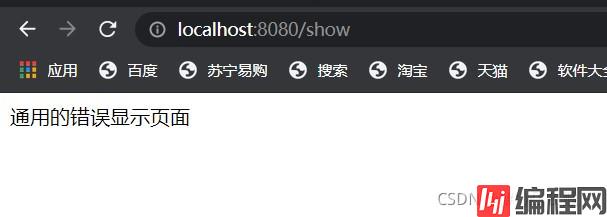
步骤;
1、创建异常处理器类实现HandlerExceptionResolver
2、配置异常处理器
3、编写异常页面
4、测试异常跳转
演示;
第一步:创建异常处理器类实现HandlerExceptionResolver
package com.itheima.resolver;
import com.itheima.exception.MyException;
import org.springframework.web.servlet.HandlerExceptionResolver;
import org.springframework.web.servlet.ModelAndView;
import javax.servlet.Http.httpservletRequest;
import javax.servlet.http.HttpServletResponse;
public class MyExceptionResolver implements HandlerExceptionResolver {
public ModelAndView resolveException(HttpServletRequest httpServletRequest, HttpServletResponse httpServletResponse, Object o, Exception e) {
ModelAndView md = new ModelAndView();
if(e instanceof MyException){
md.addObject("info","自定义异常");
}else if(e instanceof ClassCastException){
md.addObject("info","类型转换异常");
}
md.setViewName("error");
return md;
}
}
第二步:在springMVC的配置文件当中配置异常处理器
<!--自定义异常处理器-->
<bean class="com.itheima.resolver.MyExceptionResolver"></bean>
测试访问就行了。

本篇文章就到这里了,希望能够给你带来帮助,也希望您能够多多关注编程网的更多内容!
--结束END--
本文标题: Java SpringMVC异常处理机制详解
本文链接: https://lsjlt.com/news/134786.html(转载时请注明来源链接)
有问题或投稿请发送至: 邮箱/279061341@qq.com QQ/279061341
2024-03-01
2024-03-01
2024-03-01
2024-02-29
2024-02-29
2024-02-29
2024-02-29
2024-02-29
2024-02-29
2024-02-29
回答
回答
回答
回答
回答
回答
回答
回答
回答
回答
0